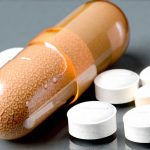Living with a dry bladder condition – often stemming from underlying issues like overactive bladder syndrome, interstitial cystitis, or simply age-related changes – can significantly impact daily life. It’s not just about frequent urination; it’s the discomfort, the anxiety of unpredictable urges, and the disruption to routine that truly take a toll. Many individuals find themselves constantly seeking strategies to manage their symptoms, and while fluid intake is crucial (despite seeming counterintuitive), what you drink and what you eat plays an equally vital role. This article explores how thoughtfully chosen meals can support bladder health by promoting hydration and minimizing irritation. We’ll delve into the concept of “moisture-preserving” foods – those that contribute to overall fluid balance and offer soothing qualities for sensitive bladders – offering practical ideas and considerations for building a more comfortable, confident lifestyle.
The challenge lies in finding the delicate balance between adequate hydration and avoiding bladder triggers. While increasing water intake is generally recommended, certain beverages can exacerbate symptoms. Similarly, specific foods might cause inflammation or irritation within the bladder lining. A moisture-preserving approach isn’t about restriction; it’s about intelligent selection. It focuses on incorporating foods with high water content, those that naturally support urinary tract health, and avoiding known irritants as much as possible, based on individual tolerance. This means focusing less on eliminating entire food groups and more on understanding how different items impact your body. Ultimately, building a moisture-preserving diet is about empowerment – taking control of your well-being through mindful eating choices.
Hydration & Water-Rich Foods
Staying hydrated is paramount for bladder health, but simply drinking eight glasses of water isn’t always enough. The body utilizes hydration differently depending on the source. Food contributes significantly to our daily fluid intake and can often be more readily absorbed than plain water alone. Water-rich foods offer a dual benefit: they provide essential fluids while also delivering vital nutrients. Consider these excellent options for boosting your moisture levels:
- Fruits: Watermelon, cucumbers (yes, technically a fruit!), strawberries, cantaloupe, and peaches are all exceptionally hydrating choices. They’re naturally sweet and satisfying, making it easier to stay consistent with your fluid intake.
- Vegetables: Celery, lettuce, zucchini, bell peppers, and tomatoes boast high water content alongside important vitamins and minerals. Incorporating these into salads, soups, or as side dishes is a simple way to enhance hydration.
- Soups & Stews: Broth-based soups are fantastic for providing both fluids and electrolytes. Opt for low-sodium varieties to avoid further bladder irritation from excess salt.
Beyond the sheer volume of water in these foods, their cellular structure helps with absorption. The fiber content also aids in regulating bowel movements, which indirectly supports bladder health by preventing pressure on the urinary tract. It’s important to note that individual tolerance varies greatly. While most fruits and vegetables are generally well-tolerated, some individuals may find certain varieties trigger symptoms. Keeping a food diary can help identify personal sensitivities. For more tailored dietary adjustments, consider exploring smart grocery choices to support your bladder health.
Soothing & Anti-Inflammatory Foods
Beyond hydration, focusing on foods with anti-inflammatory properties can significantly benefit bladder health. Chronic inflammation within the bladder lining is often associated with conditions like interstitial cystitis and overactive bladder syndrome. Incorporating foods known to reduce inflammation may help alleviate discomfort and improve overall function. A diet rich in omega-3 fatty acids, antioxidants, and phytonutrients can be particularly beneficial.
Foods that support this approach include:
- Fatty Fish: Salmon, mackerel, tuna, and sardines are excellent sources of omega-3 fatty acids, which have potent anti-inflammatory effects.
- Flaxseeds & Chia Seeds: These seeds provide another source of omega-3s and are also rich in fiber, aiding digestion and promoting regularity.
- Berries: Blueberries, raspberries, and strawberries are packed with antioxidants that combat inflammation and protect cells from damage.
- Turmeric: This spice contains curcumin, a powerful anti-inflammatory compound. Incorporate it into your cooking or consider taking a curcumin supplement (consult with a healthcare professional first).
It’s crucial to remember that an anti-inflammatory diet is about consistency and balance. It’s not just about adding specific foods; it’s also about minimizing inflammatory triggers like processed foods, sugary drinks, and excessive amounts of red meat. Combining these dietary changes with stress management techniques can further enhance their effectiveness. You might find daily meals supporting bladder lining health particularly helpful in reducing inflammation.
Identifying & Avoiding Bladder Irritants
One of the most important aspects of a moisture-preserving diet is identifying and avoiding bladder irritants. These are substances that can directly stimulate or inflame the bladder lining, leading to increased urgency, frequency, and discomfort. Common culprits include:
- Caffeine: Found in coffee, tea, soda, and chocolate, caffeine acts as a diuretic, increasing urine production and potentially irritating the bladder.
- Alcohol: Similar to caffeine, alcohol is a diuretic and can exacerbate bladder symptoms.
- Spicy Foods: Capsaicin, the compound that gives chili peppers their heat, can irritate the bladder in some individuals.
- Acidic Foods & Drinks: Citrus fruits, tomatoes, cranberry juice (despite popular belief), and carbonated beverages can all contribute to bladder irritation due to their acidity.
- Artificial Sweeteners: Some artificial sweeteners have been linked to bladder discomfort in sensitive individuals.
The key is individual sensitivity. What triggers symptoms for one person may not affect another. Keeping a detailed food diary, noting any correlation between dietary intake and symptom flare-ups, is invaluable. Elimination diets, where you temporarily remove suspected irritants from your diet and then reintroduce them one at a time, can also help pinpoint specific sensitivities. Learning about salt reduction for bladder control can also minimize irritation.
Building Moisture-Preserving Meals: Practical Tips
Creating moisture-preserving meals doesn’t require drastic changes to your cooking habits. It’s about making small, mindful adjustments that add up over time. Here are some practical tips for incorporating these principles into your daily routine:
- Start with hydration: Begin each day with a glass of water and incorporate hydrating foods into every meal. Add sliced cucumbers to your salad or enjoy a handful of berries as a snack.
- Choose soothing beverages: Opt for herbal teas (chamomile, peppermint – if tolerated), diluted fruit juices, or infused water instead of caffeinated drinks or soda.
- Focus on whole foods: Prioritize fresh, unprocessed foods over packaged and processed options. This minimizes exposure to potential irritants and maximizes nutrient intake.
- Cook with anti-inflammatory spices: Incorporate turmeric, ginger, and cinnamon into your cooking to add flavor and reap their health benefits.
Food Diary & Personalized Approach
The most effective moisture-preserving diet is one that’s personalized to your individual needs and sensitivities. A food diary is an essential tool for achieving this. Here’s how to use it effectively:
- Record everything you eat and drink: Be specific about ingredients and portion sizes.
- Note any symptoms: Record the time, severity, and nature of any bladder-related symptoms (urgency, frequency, pain, etc.).
- Look for patterns: After a week or two, review your diary to identify potential correlations between dietary intake and symptom flare-ups.
- Experiment with elimination diets: If you suspect a specific food is triggering symptoms, temporarily remove it from your diet and then reintroduce it to see if your symptoms return.
Remember that consistency is key. Maintaining a food diary requires discipline, but the insights gained can be invaluable in managing your bladder health and improving your quality of life. Don’t hesitate to consult with a registered dietitian or healthcare professional for personalized guidance and support. They can help you create a moisture-preserving meal plan tailored to your specific needs and sensitivities. Consider how morning hydration techniques can set the tone for bladder comfort throughout the day, and further enhance your personalized approach.
For those seeking additional support in meal planning, exploring safe soup options can be a comforting and bladder-friendly choice, particularly during colder months. And remember to check out comforting meals that don’t strain the bladder for inspiration on delicious and supportive recipes.
Finally, integrating a holistic approach with calm evenings for bladder recovery will further contribute to your overall well-being and symptom management.





















